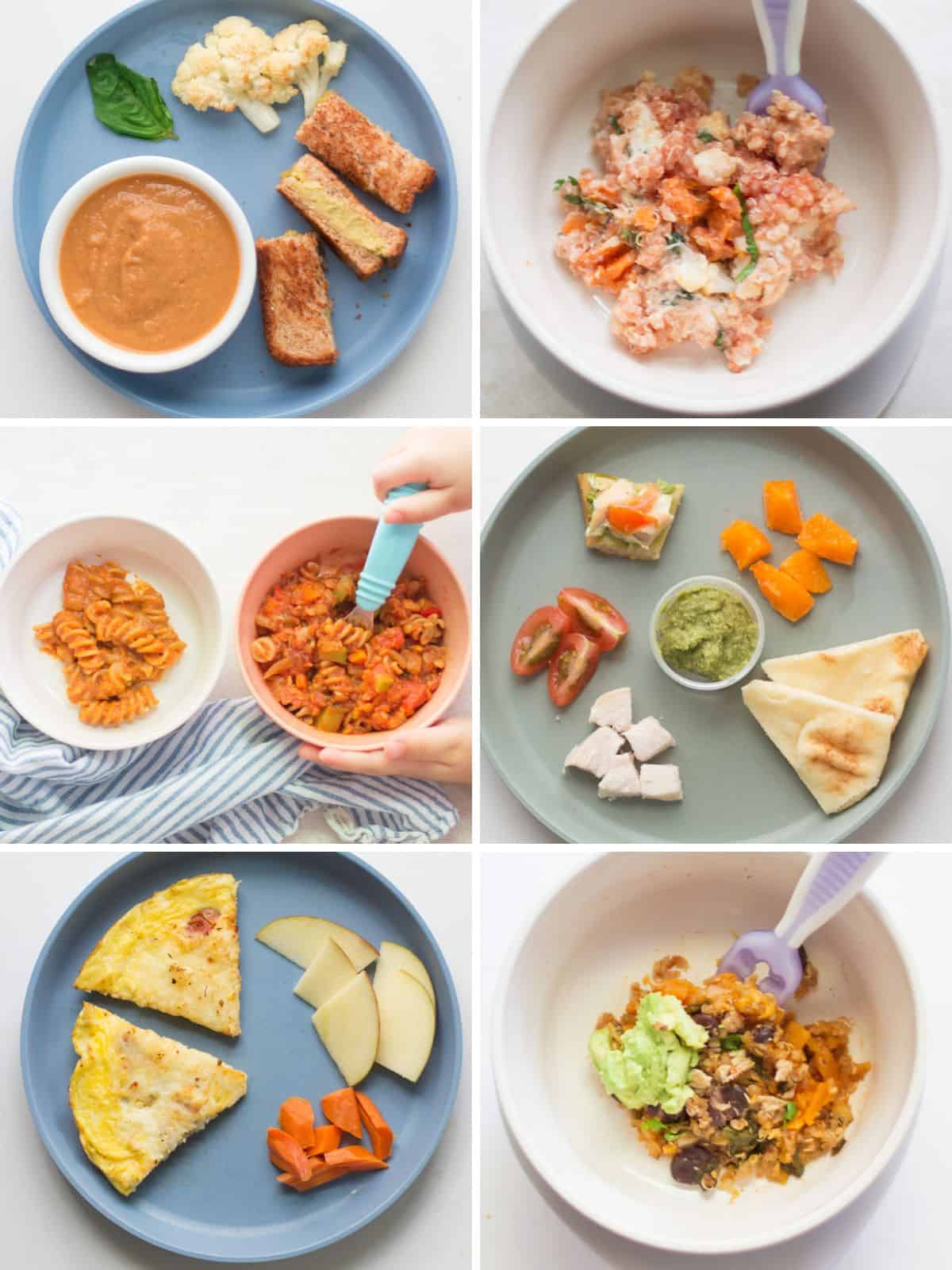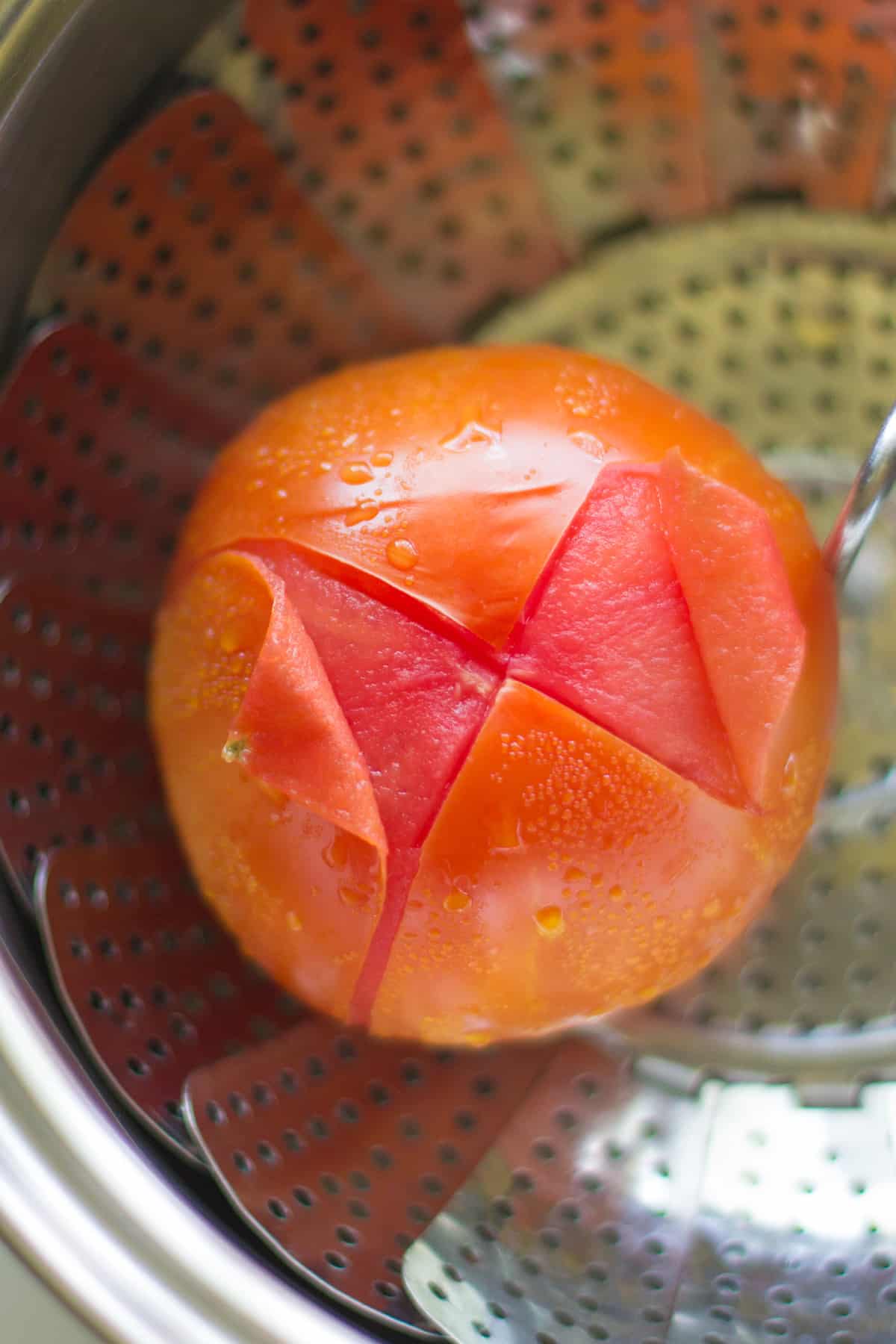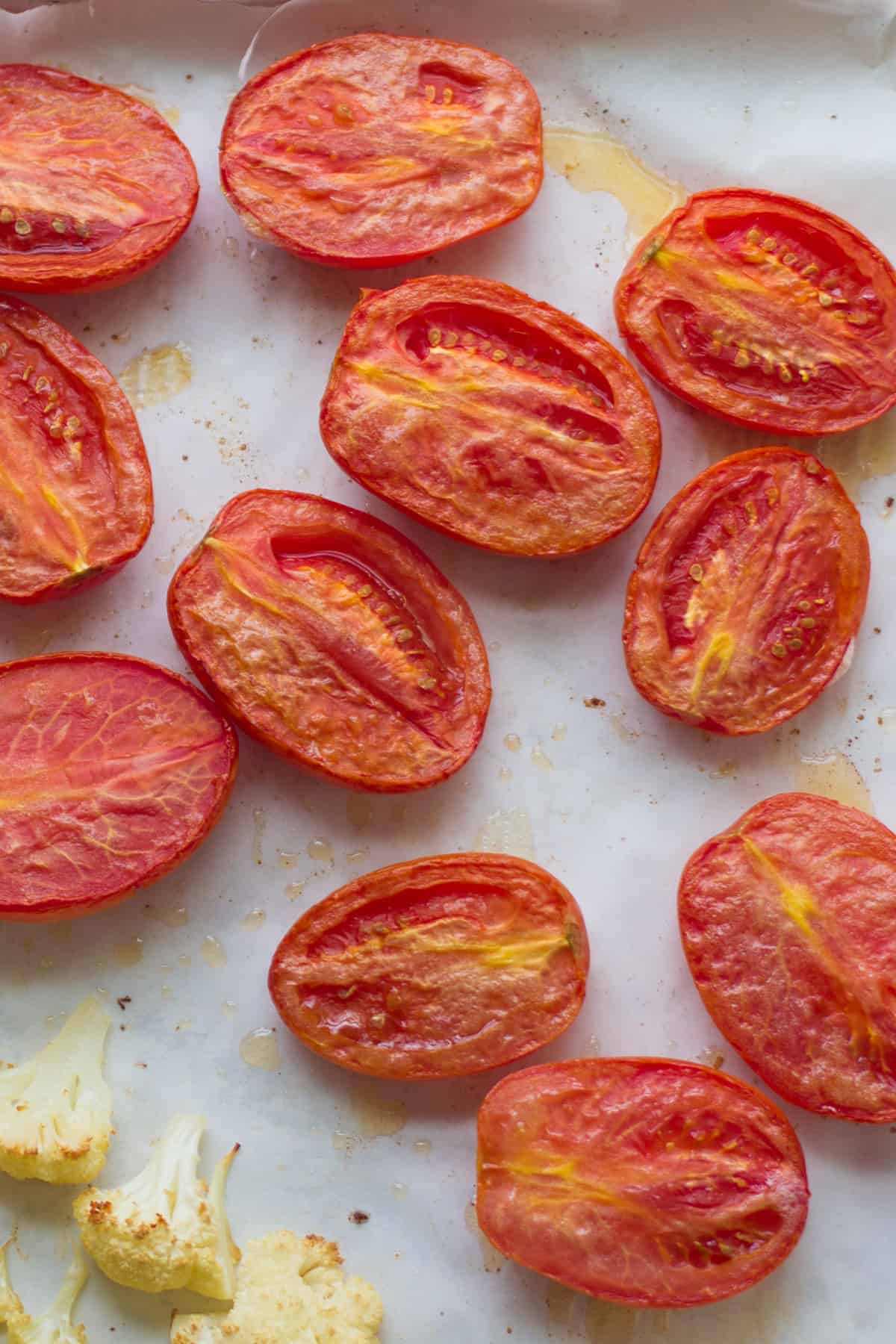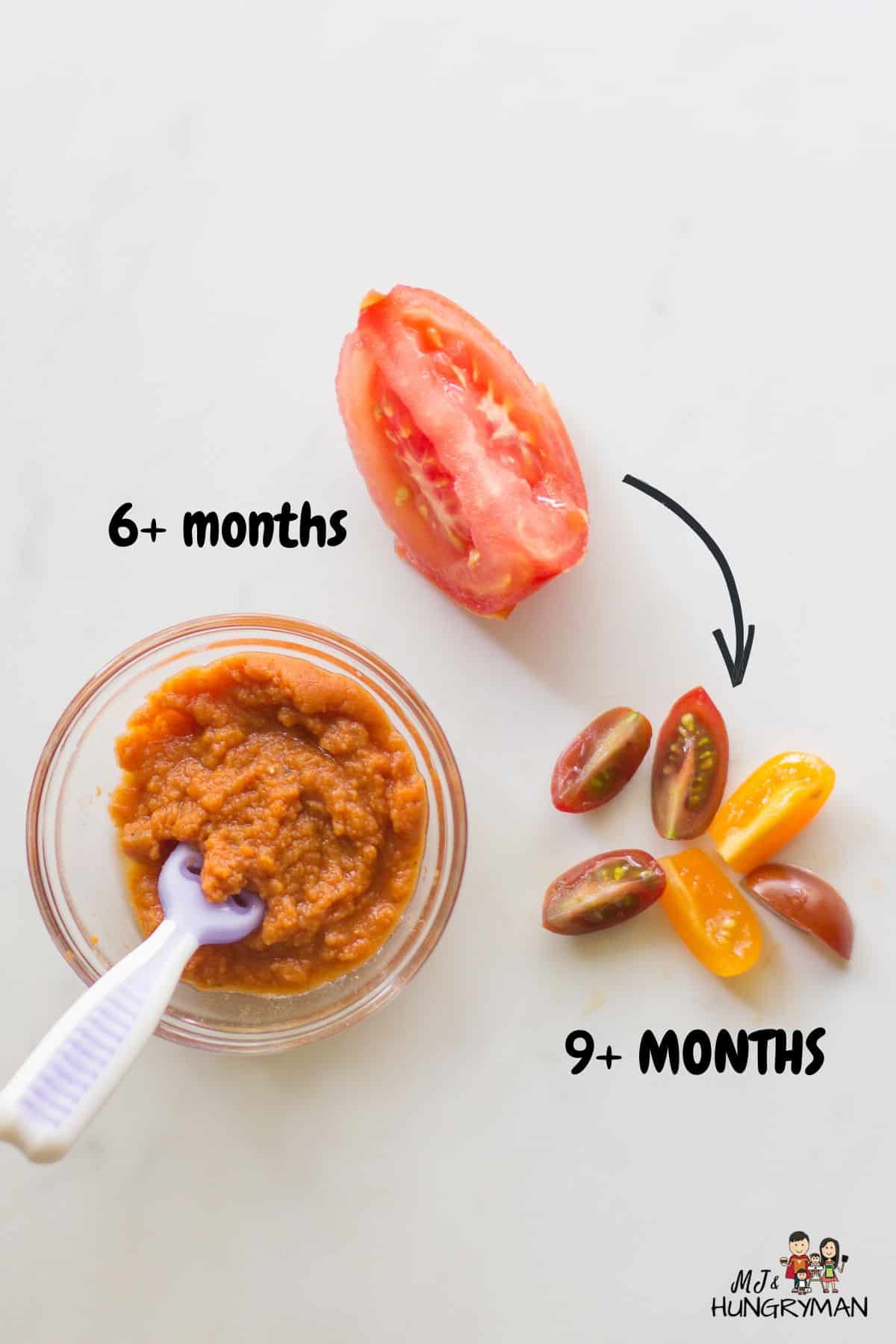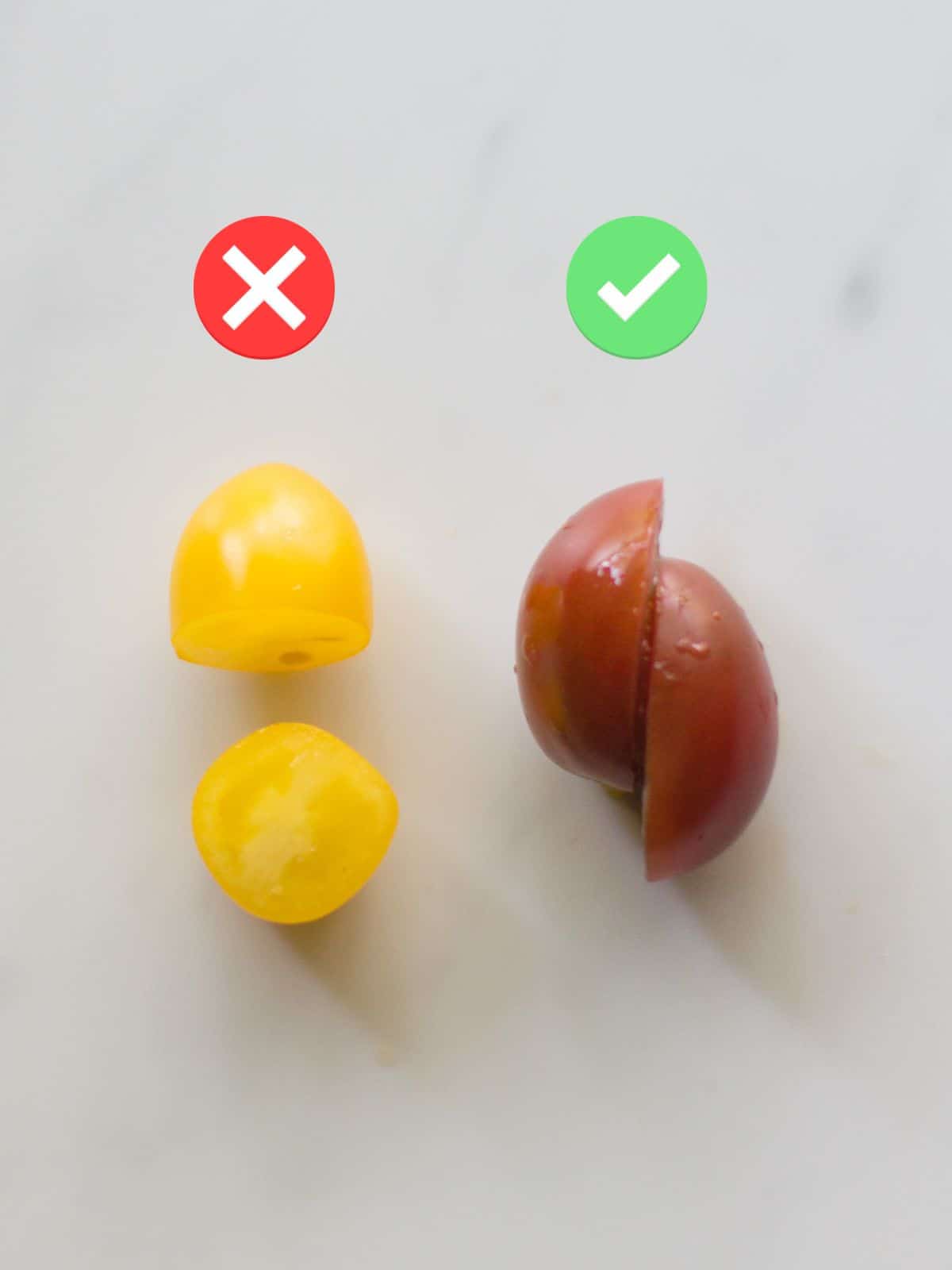When can babies eat tomatoes?
This nutritious fruit be offered to babies as soon as they’re ready to start solids, usually around 6 months. It’s important to remember that your baby is unique and that rather than going by the calendar, you need to make sure your baby is DEVELOPMENTALLY ready to start solids. If you’re unsure, be sure to grab my FREE handout!
Health Benefits
Although prepared like a vegetable, tomato is actually a fruit that belongs to the nightshade family, along with eggplants, potatoes, and peppers. The rich red color of tomatoes is due to a powerful antioxidant called lycopene, which has been linked to many health benefits including heart health, protection against cancers and sunburns. The yellow and orange-hued tomatoes contain beta carotene (also found in carrots and sweet potatoes). Both lycopene and beta carotene are carotenoids which, once consumed, get converted into vitamin A, a key nutrient for good vision, cell growth, and a healthy immune system. Carotenoids must be consumed through the diet and are best absorbed when eaten with dietary fat. Tomatoes are also great sources of vitamin C which, when paired with plant-based iron foods, can greatly enhance the absorption of iron.
Are tomatoes safe for babies?
Raw tomatoes, particularly cherry and grape tomatoes, are a potential choking hazard, so be sure to follow the serving suggestions listed below. You may notice redness where the tomatoes came in contact with your baby’s skin. This is not necessarily a sign of an allergic reaction. Rather it’s most likely a mild skin irritation due to the tomato’s high acid content. Most definitely consult your doctor if the irritation is severe. But if it’s mild and goes away once the skin is cleaned, then there’s no need to restrict tomatoes from their diet. If it bothers you, though, opt for orange and yellow tomatoes which tend to be less acidic.
Selecting the best tomatoes
Nothing beats locally grown tomatoes during their peak summer season. The less they travel and more time they spend ripening on the vine, the better! There are thousands of types of tomatoes, but you’re most likely to find beefsteak, roma, cherry, grape, and heirloom tomatoes. No matter the variety, here are some things to look for:
Choose ones that feel heavy for their size and aren’t too hard or soft. Avoid those with bruises, blemishes, or wrinkled skin. The skin should be smooth, shiny, and uniform. Take a sniff! If it smells earthy and sweet around the stem end, grab as many as you can ;).
Cooking Methods
While you can serve raw tomatoes to your baby, if you are feeling nervous and want to cook until soft, then here are the top methods to try. Note that cooking will increase lycopene while decreasing vitamin C content. I recommend leaving the skin on for added nutritional value, but you can certainly peel it before serving if it makes you feel more comfortable.
Blanch
Boil a pot of water. Using a pairing knife, cut an “X” in the bottom of each tomato. Cut just enough to pierce through the skin, but not too deep into the flesh. Add to the boiling water and cook for 20-30 seconds. Remove and put in ice-water-filled bowl.
Steam
You can transfer to a bowl with ice, but I normally don’t do this. You should be able to easily peel the skin.
Roast
How to cut tomatoes for babies
6+ months old
Cut raw or cooked tomato into large wedges. You can leave the skin on or off. Your baby will most likely spit out the skin but it’s a great exposure to texture. Serve as a puree, tomato sauce, or soup (see recipes below). Stir in lentils, oatmeal, or pasta. Best First Foods for Babies
9+ months old
By 8-9 months of age, your baby should develop their pincer grasp and be able to pick up smaller pieces. In addition to all the suggestions above, you can start offering bite-sized pieces. But do continue offering larger pieces so they can practice taking bites.
Baby-Friendly Tomato Recipes
Iron-rich Baby PastaSugar Free Pizza SaucePizza CasseroleHealthy Sloppy JoesVeggie-loaded BolognesePizza EggsVitamix tomato soupSweet Potato Quinoa Lasagna
If you want to learn how to prepare other specific food(s), check out my How To Series!

